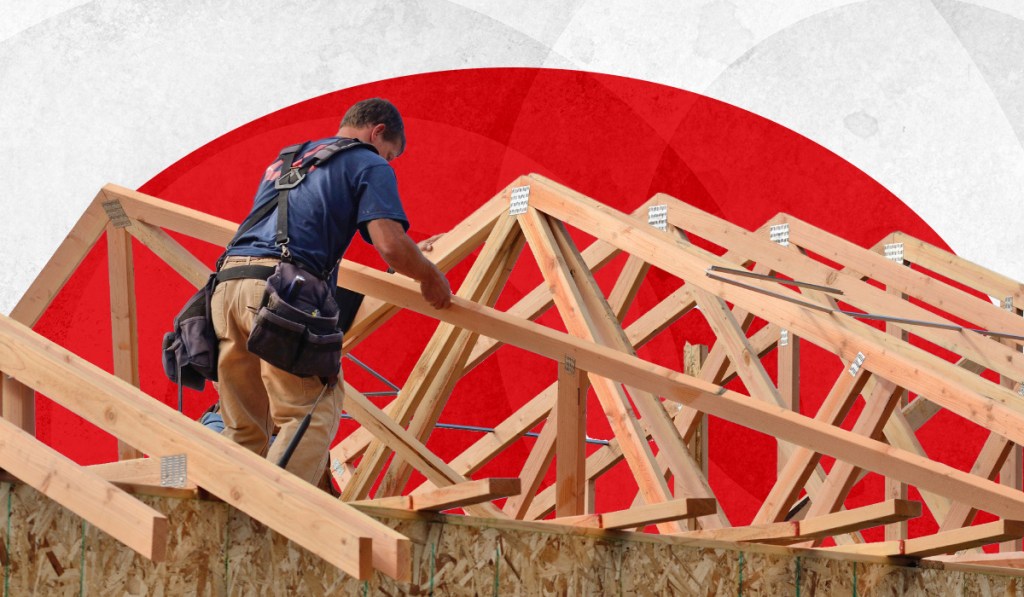Single-family homebuilders are pulling back in a major way. The downward trend overall in new housing starts continued in November, dropping 0.5% from October to a seasonally adjusted annual rate of 1.427 million, according to a report released Tuesday by U.S. Census Bureau and the U.S. Department of Housing and Urban Development.
November’s annual housing start rate was down 16.4% on a yearly basis, reflecting the continued decline in homebuilder confidence and middling sales activity.
“November continued to see a slip in home construction activity, despite inflation cooling off and mortgage rates falling,” Nicole Bachaud, Zillow’s economist, said in a statement. “Even though the cost of borrowing is lower than it was a month ago, affordability is still a major concern causing many potential home buyers to stay out of the housing market.”
A sizable decrease in single family starts was the main culprit in the overall slower pace of homebuilding. In November, the single-family sector posted a 4.1% monthly decline and 32.1% yearly drop to a pace of 828,000 units. The multifamily sector, on the other hand, had a strong month with starts increasing 4.8% from the month prior and 24.5% compared to a year ago, to a rate of 584,000 units.
Regionally, housing starts were down month over month in the Northeast (-18.6%) and Midwest (-16.5%), but were up 0.1% and 8.3% in the South and West, respectively. On a yearly basis, housing starts were down in all four regions, with the largest annual drop coming from the Northeast at 27.2%.
While housing starts mostly held steady on a national basis, the number of building permits issued to homebuilders represented one of the largest monthly drops in the past decade. In November, the number of building permits posted an 11.2% monthly decline and 22.4% year-over-year drop to a pace of 1.342 million. Large declines in both the single-family and multifamily sectors contributed to this drop, with single-family falling 29.7% and multifamily dropping 10.7% year over year, to annual rates of 781,000 and 509,000, respectively.
“It’s not easy for builders to balance the short-term pullback in demand with the long-term need for more housing nationwide, but on the surface it seems a more reasonable strategy would be to pull back on short-term starts and keep the longer-term permit pipeline as full as possible,” Neda Navab, the president of U.S. regional operations at Compass, said in a statement. “That homebuilders have instead taken the opposite path – clearing out those homes already permitted, but leaving the cupboard more bare for tomorrow – does not bode well for a nation that remains under-built after an anemic decade following the 2008-era housing crash.”
“While it may only take a few months to complete a home once work on it has begun, in many areas the permitting process that precedes any actual construction work is an exceedingly complicated and expensive process that can take years to play out. Securing permits today may enable many builders to then begin work tomorrow when conditions are more favorable, and any reasonable policy improvements designed to make the permitting process smoother should be welcomed,” Navab continued.
On a most positive note, completions by homebuilders were up 10.8% month over month and 6.0% year over year, with the single-family sector reporting a 9.9% yearly increase to a rate of 1.047 million. The multifamily sector, however, was down 3.2% compared to a year ago, to a rate of 430,000.
“Homebuilder activity from months past is finally paying off, an increase in the number of completions in November, and an increase in single family completions specifically, will help to boost the inventory starved market this winter,” Bachaud said.
Odeta Kushi, deputy chief economist at First American, said the housing market remains structurally undersupplied, “but we’re at a point in the housing cycle where demand has pulled back swiftly and inventory may rise as homes sit on the market longer. Increasing new-home completions will be beneficial to the market in the long-run.”






